watch now!
A place where I discuss all things related to toddlers and motherhood!
Subscribe to my Youtube channel
As a clinical psychologist, published author, and mother to two cheeky young children, I get it. I’ve spent YEARS researching and filtering through the noise online, so you don’t have to.
PARENTING TIPS
POTTY TRAINING
ANTIRACISM
PLAY
Blog Topics
SIBLING RIVALRY
SCREEN TIME
TANTRUMS
DISCIPLINE
Hi I'm Dr. Jazmine
When and How to Discipline Your Baby, Toddler, or Child Using Positive Discipline
topics:
Would it surprise you if I said that you should start discipline now, even if your child is an infant? In this blog, I’m going to break down how and when you should start positive discipline practice, and how to use positive discipline with your child and what it looks like.
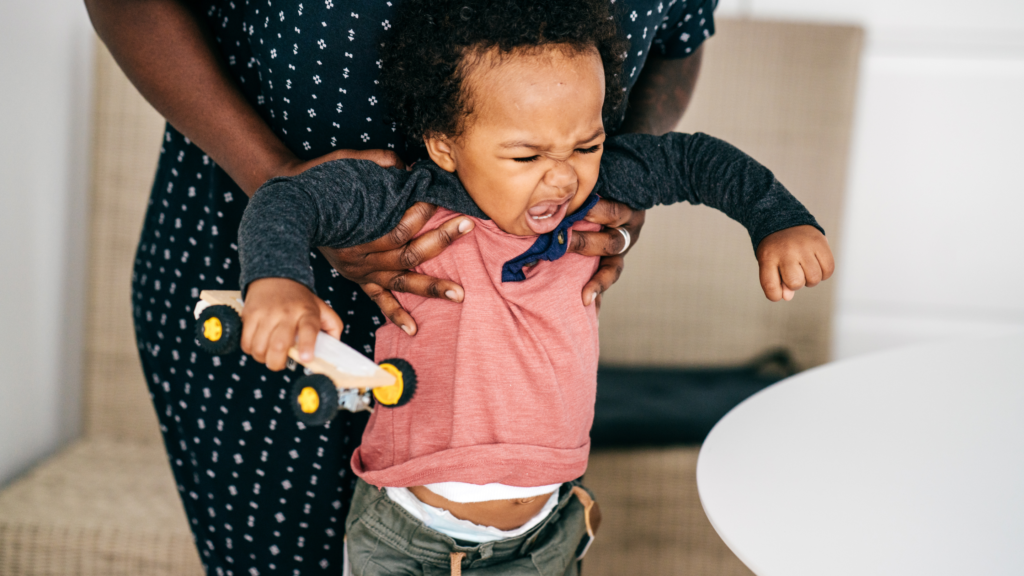
What does discipline mean? How is discipline different from punishment?
Discipline commonly gets mixed up with punishment. Punishment means the infliction of or imposition of a penalty as retribution of or for an offense.
Discipline means to teach and guide through instruction and training, which is what we do as parents. We naturally want to teach our children new skills, teach them how to make good choices, and teach them right from wrong.
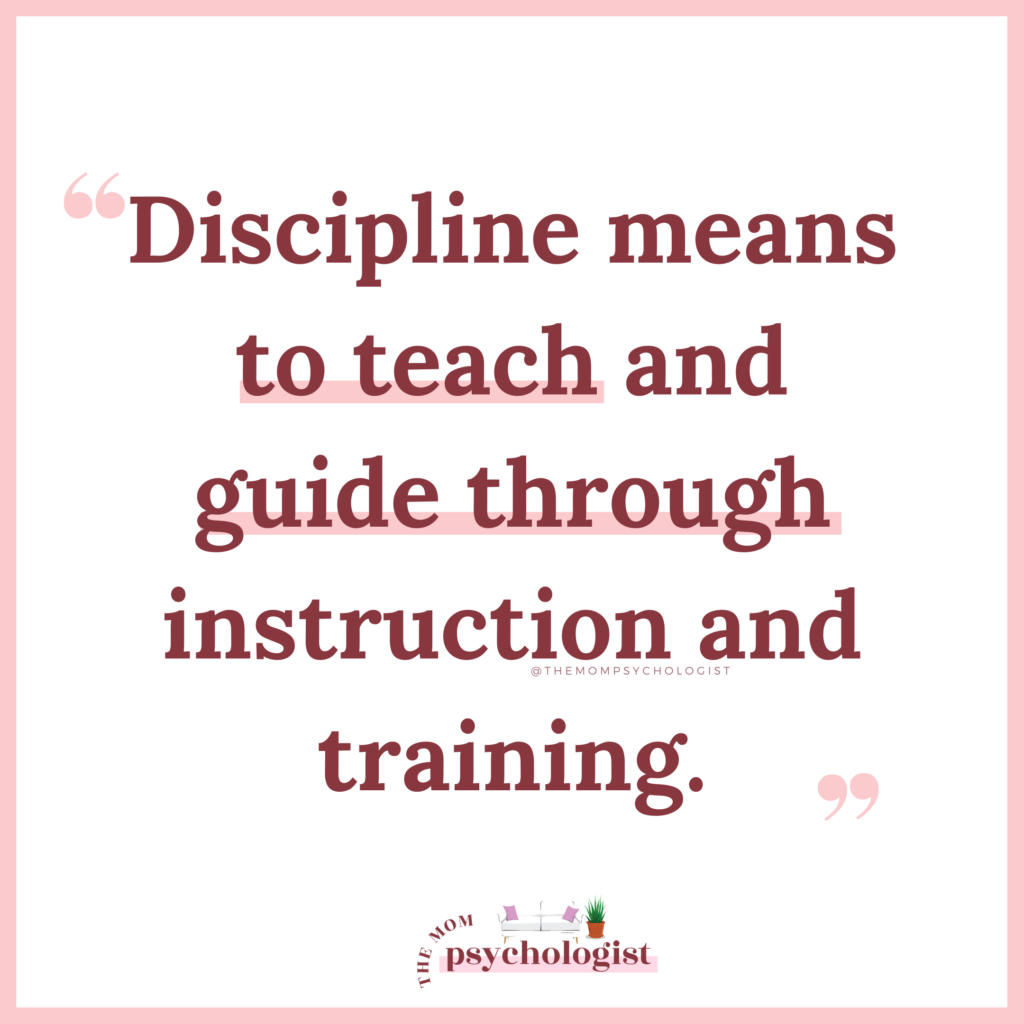
How do I use positive discipline with my baby, toddler, or child?
So when we talk about positive discipline, it means to teach. When we become parents, we become our child’s first teachers. So what do teachers do when they want to teach their students a new skill? There’s a certain process that has to happen.
First, they might introduce the skill. They might provide some backstory or an introduction to the topic to explain why it’s important and why they should learn this. They have to get their students to buy in so they understand this is why we should work hard on this skill.
Then they have to model that skill for their students. They have to teach them how to do it and show them through action, training, and modeling exactly how to do it through clear, easy directions. The teacher also has to give their student the appropriate environment and tools so they can practice.
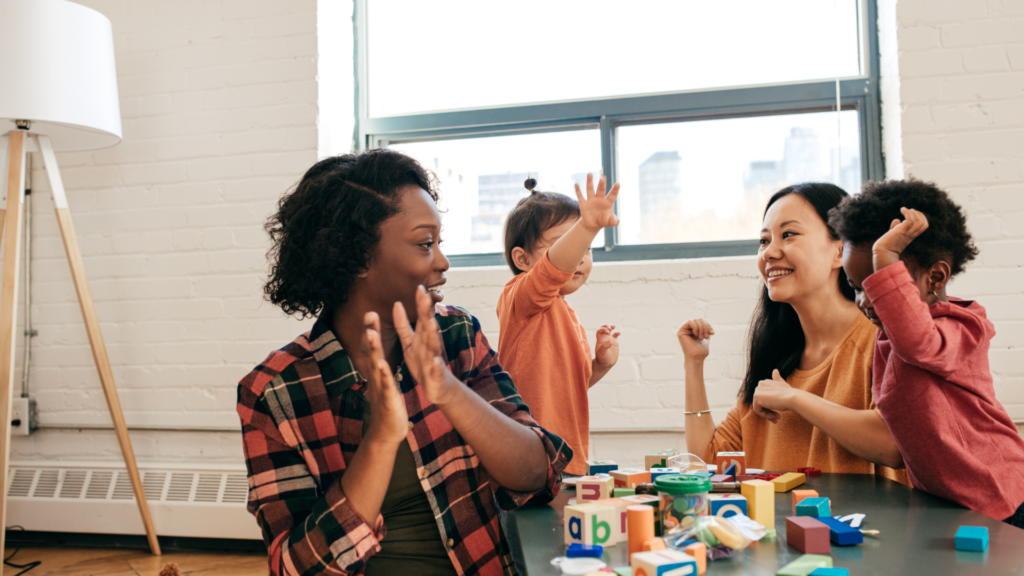
And while their students are practicing, the teacher is guiding them and praising their efforts. They’re cheering them on. They’re answering their questions. There’s this whole process to it before a student becomes a master of whatever they’re trying to learn.
And that’s the same approach that we as parents should have.
When we want to teach our children a new skill (and remember positive discipline = teaching), we need to take the following steps:
- We have to break down the skill.
- We have to model it for our children.
- We have to give our children the right tools and environment so they can try the new skill.
- We have to answer their questions and objections.
- We have to troubleshoot with our children and guide them along that path.
- We have to cheer our children on, support them, and encourage them.
For example, let’s say you’re trying to teach your toddler how to start with some chores, which I like to call “household contributions.” We all need to contribute to the family, and chores are a wonderful, active way to contribute. My golden rule is if your child can walk, they can do some chores.
You’ve decided you’re trying to teach your new toddling toddler how to pick up trash off the floor. To start, you’re going to want to break it down for
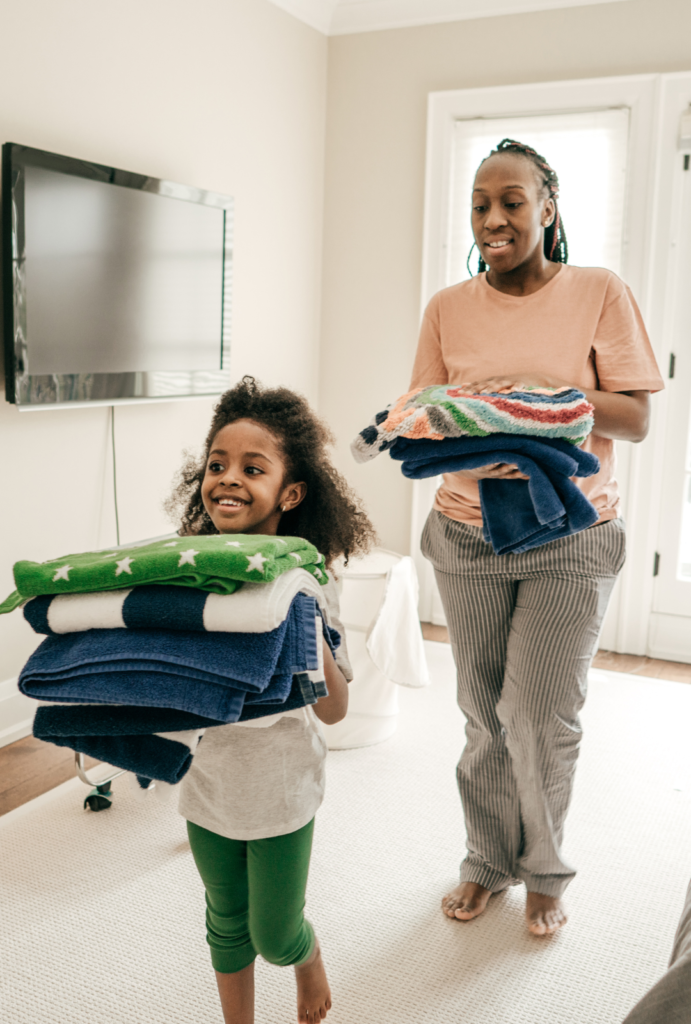
your toddler, model how to pick up the trash, and teach your toddler why it’s important to pick up our trash. Try saying:
- “It’s important to pick up our trash so people don’t slip on it and it doesn’t cause a mess or get in our way. This is where trash goes. It doesn’t go on the floor. It goes here.”
You’re educating your child and getting their buy-in. And then you’re modeling it for your child. This can look like:
- “I’m going to pick up some trash. Trash goes here. I’m going to pick this up and put it over here. Oh, look at me go!”
You’re making it fun. Then you’re going to give your toddler the right environment and tools. What that could mean is you’re going to limit distractions. You’re going to turn off the music, turn off the radio, and turn off the TV. You’re going to make sure that you have their undivided attention.
You’re of course going to make sure they can do this in the first place – that they’re able to pick up the trash and take it to the trash can. You’re going to make sure that what you’re asking of your child is developmentally appropriate.
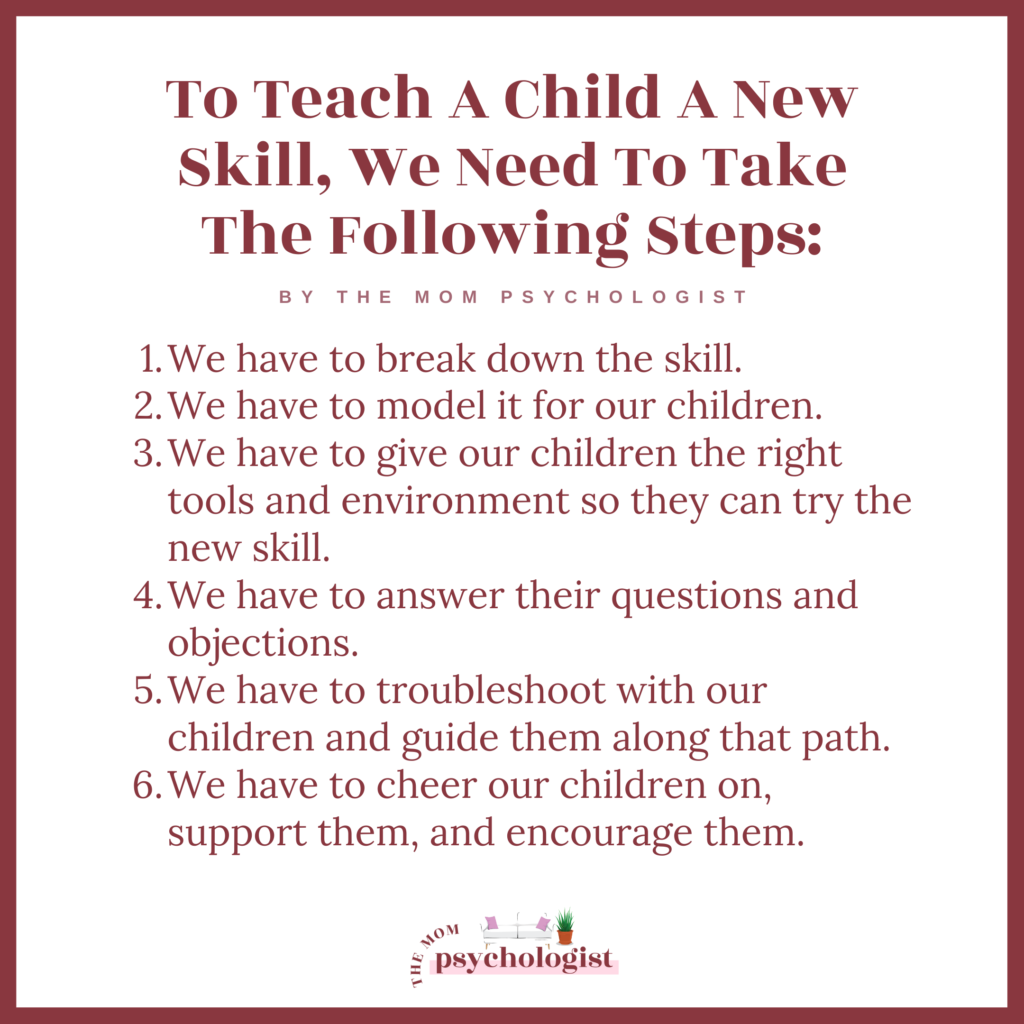
Then you’re going to teach how to do it in small steps, which could look like this:
- You walk with your toddler to the trash.
- You point to the trash and tell your toddler, “Pick it up, please.”
- When your toddler picks it up, you say, “Yay!” as a sign of encouragement.
- Then, holding your toddler’s hand, you walk them to the trash and tell them, “Drop it in the trash can.”
- When your toddler drops it in the trash, say “Yay!” so you’re praising and encouraging them. You’re getting excited and celebrating the wins. You’re making it fun.
This would be a simple breakdown of how to teach your toddler how to do chores.
It’s the same concept for anything we want our child to learn: whether it’s problem-solving, communicating their feelings, keeping their hands to themselves or looking at something and not touching it.
We have to go through this process with them to teach them that new skill. That’s positive discipline.
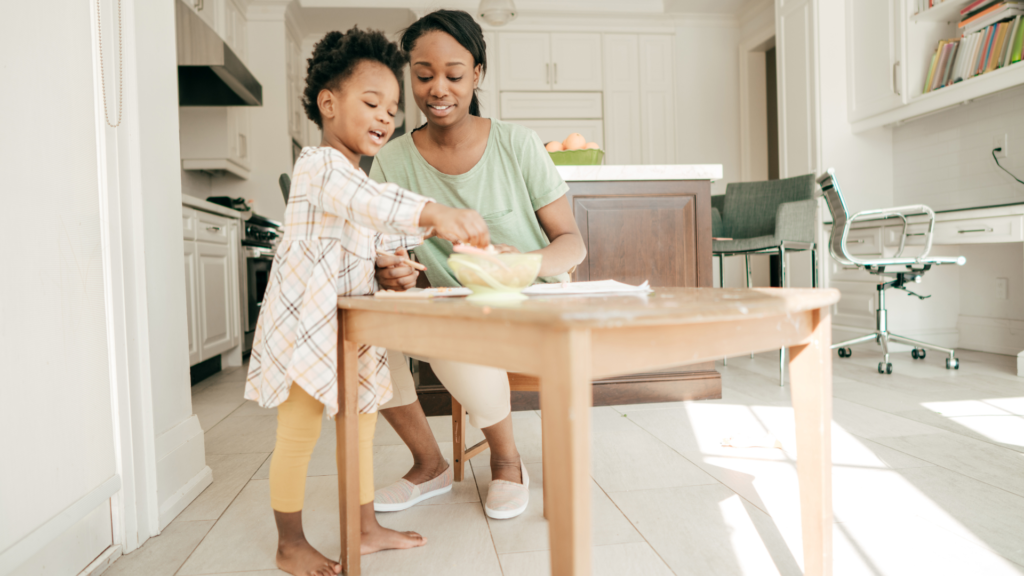
When do I start disciplining my baby, toddler, or child?
You started during infancy. If you think about it, we’re already telling our child through our messages, through our verbal and nonverbal communication, what we like and what we don’t like. So why not start to be intentional?
Around 8 or 9 months, you can start teaching your child what you like and what you don’t like. You can start the positive discipline process by modeling appropriate behavior and guiding your child through modeling and boundaries. Boundaries are really the highest form of love.
It can be a little intimidating to think about implementing boundaries with your infant, but our children thrive off of structure and boundaries. Just like how we put up baby gates, those are boundaries to let them know where they can go and where they can’t.
We want to also implement boundaries in the relationship so they know where they can go and where they can’t. It’s like psychological baby gates.
What does positive discipline look like for an infant, toddler, or child?
For a deeper dive into what positive discipline looks like for children 12+ months, I have a FREE resource for you: Age Appropriate Discipline for Toddlers & Preschoolers.
But if you have an infant, what you’re going to be doing with is going to be different from what you’re going to be doing with a 10-year-old. But it’s the same concept.
In infancy, it could look like modeling or changing the tone of voice because infants pick up on non-verbal cues. So be intentional about the intonation of your voice – saying things in a deeper way can have a huge impact – and avert eye contact.

Remember, what we pay attention to is powerful as parents.
You’re also going to redirect their behavior and slow down. And what you’re doing is guiding them through what is appropriate and what is not in a loving and developmentally appropriate way in language and behaviors they can understand.
Positive discipline is teaching.
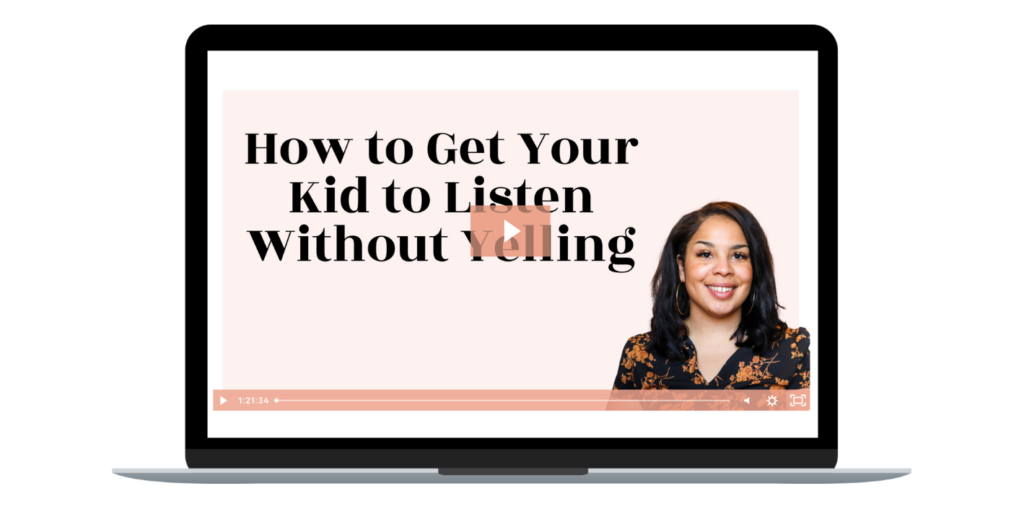
If you’re looking for a deeper dive, want to know more about positive discipline, and how to get started with it, check out my FREE workshop, How to Get Your Kids to Listen Without Yelling. We’ll work through positive discipline and setting consequences with intention and respect.
Rooting for you,
Dr. Jazmine
Love this? Don’t lose it! Click below and save it to your Pinterest!
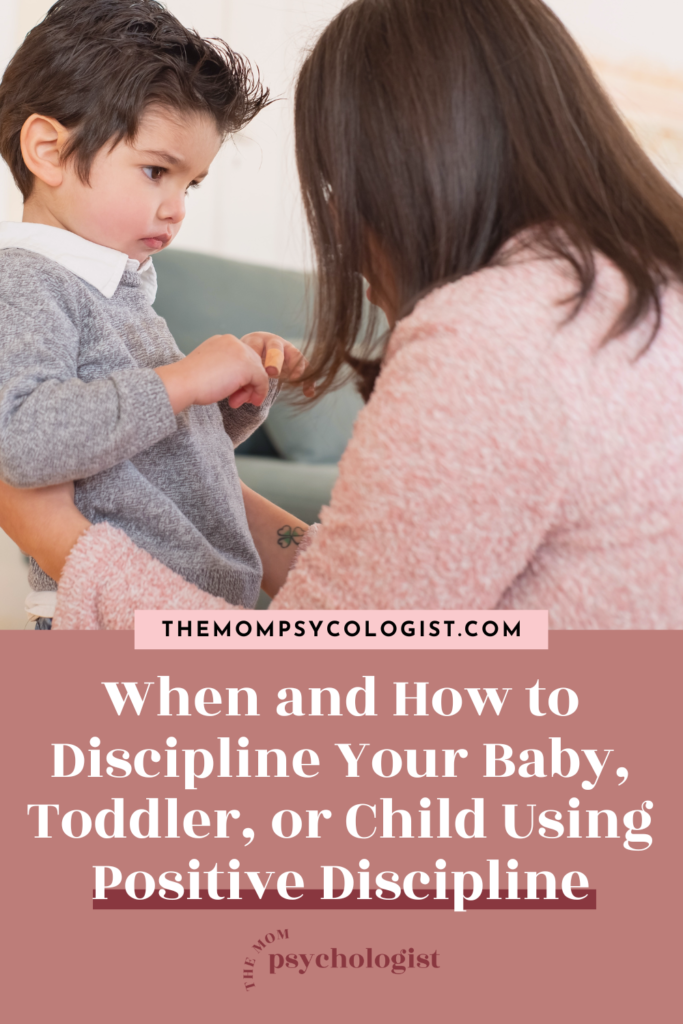
Leave a Reply Cancel reply
Copyright The Mom Psychologist® 2025
grab my free script pack!
explore
work with me
information
About
Blog
YouTube
Podcast
TMP University (Coaching)
Privacy Policy
Terms of Use
Product Disclaimer
Contact
TMP Times (Newsletter)